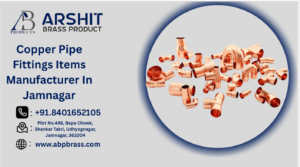
Copper Tee and Elbow Fittings: Essential Components for Plumbing Systems
“Durable copper pipe fittings including tees and elbows for reliable plumbing connections.”
“Precision-machined copper pipe fittings, including tees and elbows, ensuring tight tolerances and smooth internal surfaces for optimal fluid flow.” Our high-quality copper pipe fittings are designed for durability, corrosion resistance, and excellent thermal conductivity, making them ideal for residential, commercial, and industrial plumbing applications. Available in a variety of types including tees, elbows, couplings, reducers, and more, these fittings ensure leak-proof connections and long-lasting performance in both hot and cold water systems. Easy to install and compatible with standard copper piping, they are perfect for new installations, repairs, or upgrades.”
copper pipe fittings used application:
Copper pipe fittings are widely used in plumbing systems for residential, commercial, and industrial buildings. They connect sections of copper piping to direct water flow, join pipes at different angles, or split lines. Common applications include hot and cold water supply, heating systems, refrigeration, and gas lines, thanks to their durability, corrosion resistance, and excellent thermal conductivity.
“Arshit Brass Products are precision-machined using advanced CNC technology to ensure tight tolerances and consistent dimensions. Manufactured from high-grade brass alloys, these products exhibit excellent corrosion resistance, durability, and superior mechanical strength. Each component undergoes rigorous quality checks and surface finishing processes to meet industry standards, delivering reliable performance in plumbing, automotive, electrical, and industrial applications.”
Key Considerations for Copper Tee and Elbow Fittings:
-
- Size: Ensure that the fittings match the diameter of the pipes being connected.
- Material: Choose fittings made from high-quality copper for durability and corrosion resistance.
- Joints: Fittings can be connected using various methods, such as soldering, brazing, or compression fittings.
- Applications: The specific type of tee or elbow fitting will depend on the plumbing layout and the desired flow path.
Copper Pipe Machining and Quality Control
Machining copper pipes involves various processes to shape, cut, and finish them according to specific requirements. Quality control plays a crucial role in ensuring that machined copper pipes meet industry standards and customer expectations.
Common Machining
Processes for Copper Pipes:
- Cutting: Copper pipes can be cut using various methods, including:
- Sawing: Circular saws or band saws are often used for cutting straight or angled sections.
- Shearing: Shearing machines are used for cutting pipes with a clean, square edge.
- Laser cutting: Laser cutting offers high precision and can create complex shapes.
- Threading: Threads are cut onto the ends of copper pipes to allow for connections using threaded fittings.
- Bending: Copper pipes can be bent into various shapes using bending machines or manual techniques.
- Flanging: Flanges are created at the ends of copper pipes to facilitate connections using bolts and gaskets.
- Grooving: Grooves are cut into copper pipes to accommodate compression fittings.
Quality Control Measures for Machined Copper Pipes:
- Dimensional accuracy: Ensuring that the machined pipes meet the specified dimensions is critical. This is typically checked using calipers, micrometers, or other measuring instruments.
- Surface finish: The surface finish of the machined pipe should be smooth and free from defects like burrs or scratches. This can be assessed visually or using surface roughness testing equipment.
- Material composition: Checking the copper alloy composition is important to ensure that the pipes meet the required strength and corrosion resistance.
- Leak testing: Machined pipes, especially those used in plumbing or hydraulic systems, should be tested for leaks to ensure their integrity.
- Visual inspection: A thorough visual inspection can help identify any defects or imperfections that may have been missed by other testing methods.
Types of Copper Pipe Fittings:
- Couplings: Used to join two pipes of the same size.
- Elbows: Used to change the direction of a pipe.
- Tees: Used to join three pipes at a single point.
- Reducers: Used to connect pipes of different sizes.
- Adapters: Used to connect pipes of dissimilar materials.
- End Caps: Used to seal the end of a pipe.
- Compression Fittings: Used for making connections without soldering.
- Soldering Fittings: Used for making connections using solder.
Conclusion:
